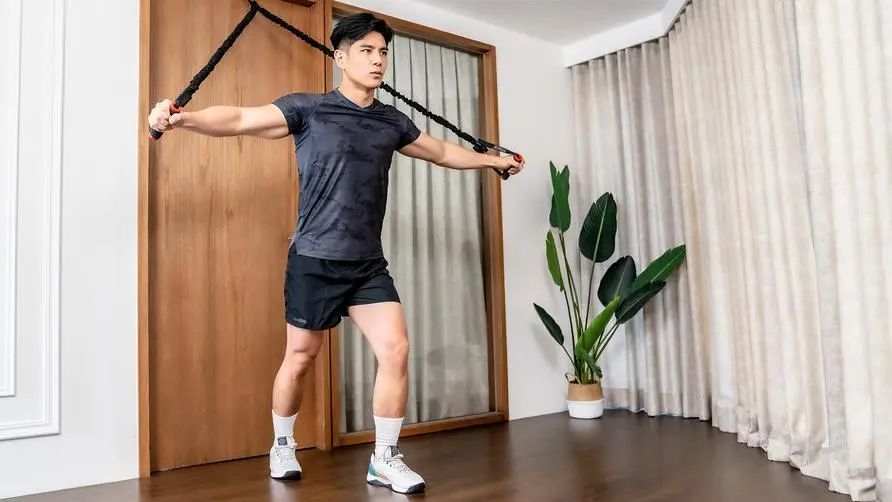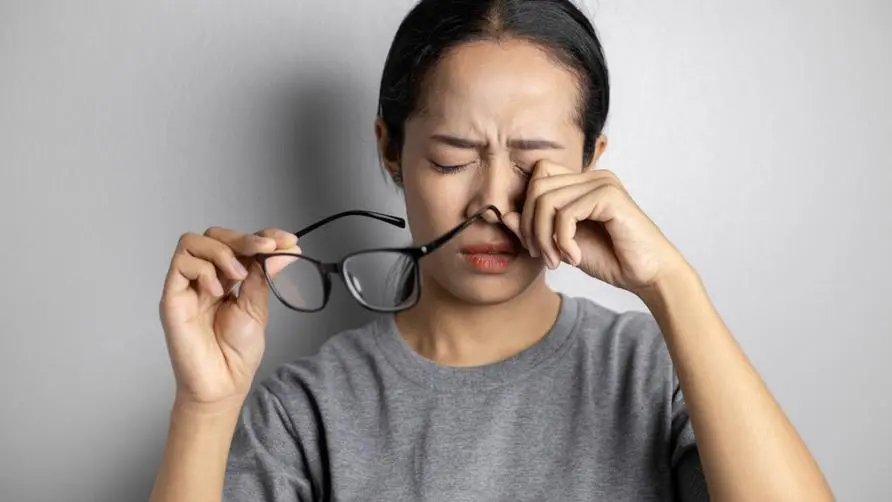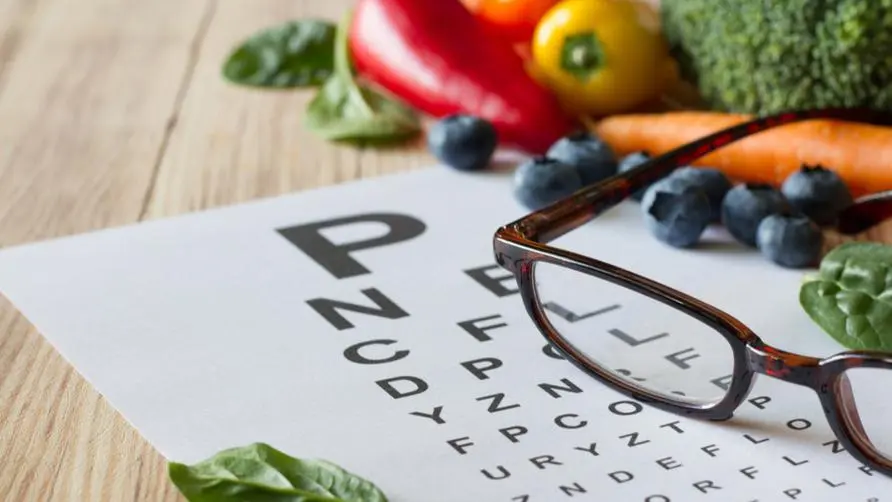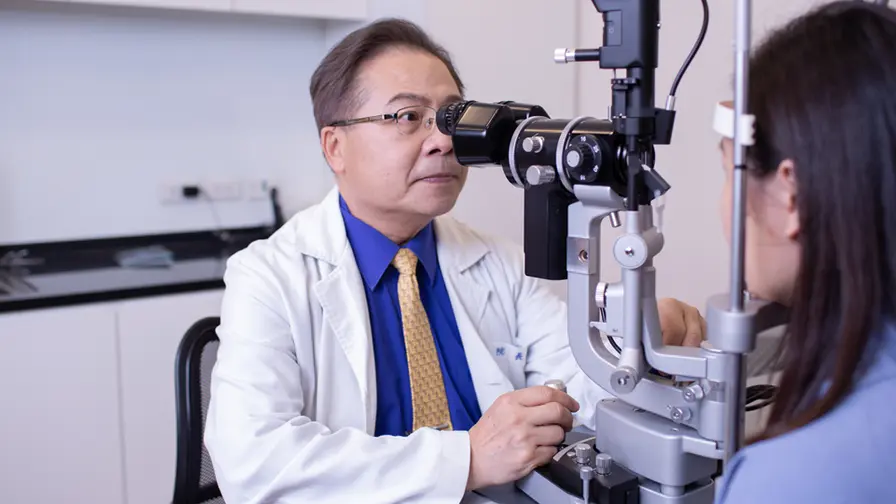Can I still have glaucoma despite normal intraocular pressure? Doctor: 30% are under 40 years old! Early screening of "risk groups"
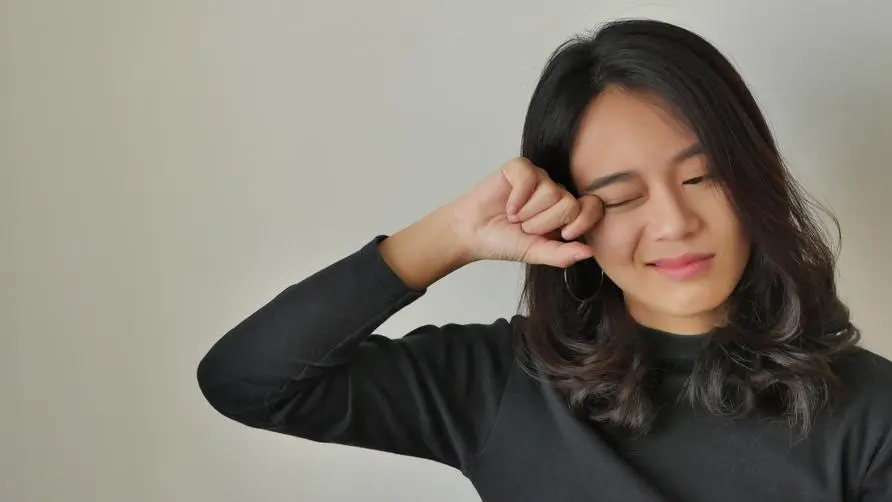
Is high myopia dangerous? Doctors warn these people are prone to glaucoma
If your vision suddenly deteriorates and the edges of your field of vision are obscured, be aware that it may be a sign of glaucoma! Glaucoma is the most common eye disease and can cause damage to the optic nerve when pressure builds up in the eye. Because the initial symptoms are not obvious, many patients mistakenly think that myopia is getting worse and change their glasses, which lasts for several years. Once you are shocked and seek medical attention for blurred vision or visual field loss, the optic nerve has already suffered irreversible damage and atrophy.
Glaucoma is also one of the main causes of blindness among Taiwanese people. It gradually weakens vision silently and is known as the “thief of vision.” Patients may also suffer from blurred vision or peripheral visual field defects, making them prone to collisions while driving or walking. , miss the mark and other accidents, and may even be unable to perform the job.
Dr. Lu Dawen, director of the glaucoma department of the Tri-Service General Hospital, called on the general public to undergo a complete glaucoma screening including intraocular pressure, visual field and optic nerve when they are 40 years old or older. High-risk groups such as those with high myopia above 500 degrees and family history should be screened early. Check-ups and regular follow-up visits,
High-risk groups for glaucoma include family history, high myopia of more than 500 degrees, diabetes, long-term use of steroids, and previous eye injuries. Another special group is women, over 55 years old, less than 160 cm tall, and with hyperopia between 100 and 400 degrees. Because the eyeball axis is shorter and the space in the eye is smaller, the optic nerve may be squeezed, causing acute glaucoma.
The proportion of glaucoma among young people is increasing. After diagnosis, active interventional treatment is required.
“The course of glaucoma is ongoing and irreversible, but therapeutic intervention can slow down the deterioration!” Dr. Chen Xianli, Department of Glaucoma, Linkou Chang Gung Memorial Hospital, said that once glaucoma is diagnosed, eye drops are the first line of treatment, but many patients use eye drops after If symptoms such as redness, dryness, stinging, and itching occur, it may be that the preservative ingredients in the eye drops damage the ocular surface. You can choose preservative-free eye drops to ensure continuous medication and actively preserve vision.
There are approximately 380,000 glaucoma patients receiving treatment in Taiwan, but there are still many people who are unaware of potential glaucoma problems. Generally speaking, the older you are, the higher the incidence of glaucoma. However, it can be found from the health insurance database that nearly 30% of patients are young adults under the age of 40. The increase in the popularity of health examinations has led to glaucoma screening and the acceptance of laser for people with high myopia. Increased willingness to undergo surgery.
Dr. Chen Xianli reminded that because glaucoma cannot be cured due to damage to the optic nerve, glaucoma must be treated as a chronic disease such as hypertension, and active and regular treatment and intraocular pressure control are required. Many patients do not order medicines and return for follow-up appointments on time due to busy work, discomfort when ordering medicines, or inconvenient storage of medicines. Thinking that you can still see but neglecting glaucoma control, the intraocular pressure has not been properly controlled for a long time, and the visual field continues to deteriorate irreversibly. Intraocular pressure must be controlled through oral medications, laser or invasive surgery.
Low intraocular pressure may not necessarily mean glaucoma. These eye-damaging behaviors should be avoided.
However, although high intraocular pressure is one of the characteristics of glaucoma, it is not the only diagnostic criterion. Dr. Lu Dawen pointed out that more than 85% of glaucoma patients have normal intraocular pressure after long-term tracking. They belong to “normal intraocular pressure glaucoma”, which may be related to the proportion of Taiwan’s highly myopic population.
Intraocular pressure, like blood pressure, also changes with time, posture and other factors. A single measurement that is normal does not necessarily mean that it remains normal for a long time. In addition, for patients who have undergone laser surgery for myopia, intraocular pressure measurement will become less accurate because the cornea is thinned by the laser. Therefore, one cannot determine the absence of glaucoma based solely on personal symptoms, feelings, and a single intraocular pressure test. A complete glaucoma screening must check intraocular pressure, visual field and optic nerve, and takes about 40 minutes to 1 hour.
Dr. Lu Dawen also reminded that people who lower their heads when walking and use 3C products in dark environments will also increase intraocular pressure. “Many people turn off the lights before going to bed and slide their mobile phones. But because the light is dark and the screen is bright, it will cause The pupil is enlarged and the iris of the eye is pushed to the side. If it is corner-locked glaucoma, it will affect the discharge of aqueous humor from the eye and increase the intraocular pressure. “Patients are reminded to pay more attention to their lifestyle and control the amount of water they drink, not exceeding the amount each time. 150cc to avoid sudden surge in intraocular pressure.
Further reading:
